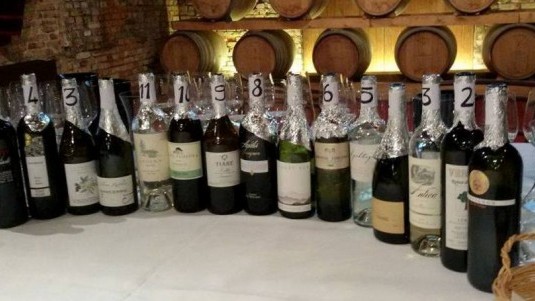Sauvignon in the world

Taking part in a blind tasting of Sauvignon is certainly both interesting and instructive. Such an occasion presented itself for me thanks to an event organized by Ca’ Bolani, an estate in the Zonin group, with a selection of 15 of the best Sauvignon from Italy (Friuli and alto Adige) and the world (France, California, New Zealand and Chile). The criteria used to choose the wines was simple: the most award-winning wines from contests, guides and specialized magazines. The tasting was reserved for Italian tasters and sommeliers.
Sauvignon is quite a particular variety, a semi-aromatic grape with an unmistakable aroma even for novices. It is so distinctive, in fact, that one either loves it or hates it. Its success derives from its popularity among consumers, given that many great white wine experts tend to shun it preferring Chardonnay from Burgundy and Mosel Riesling. The varietal’s fame has risen greatly in recent years thanks to its interpretation in the New World, in particular New Zealand where it has become a national standard bearer, which has resulted in some truly interesting versions. But Sauvignon’s success owes much to the studies of the late University of Bordeaux Professor Denis Dubourdieu who unveiled the secrets of the components responsible for its aromas and thus allowed producers and enologists a key to interpret its essence. Thanks to his findings, giant steps were also made in Italy where two basic regional versions have evolved. In Friuli, it produces a warmer and more full-bodied wine, while in Alto Adige it has a higher acidity. Thus the grape’s original homeland Loire today finds itself under siege from a host of ‘newcomers’ in regard to producing the best Sauvignon.
Sauvignon needs particular environmental and agronomic conditions in order to best express itself: good temperature variations between day and night, ample rainfall and a soil that is not too rich. It biggest enemies are too much sun and heat and thus the grapes need to be shaded by the vine’s leaves to protect their aromas. The aromas of passion fruit, tomato leaf, lime and grapefruit, including pink grapefruit, are those more common to wines from the New World, along with those of boxwood, elder and sandalwood. But anyway it is interpreted, Sauvignon remains a great varietal.
My personal ratings from the tasting are not that different from the general consensus, with a few exceptions. The reviews that follow are of the wines I liked the best but if you wish to know the results the two ratings compiled from the overall consensus click here.
One final observation: I noticed that the majority of my colleagues gave extremely low ratings to the wines and this resulted in the top wines in first ranking (the mathematical average of all our ratings) receiving only 87/100 points, while in the second (an average excluding the highest and lowest ratings) the highest was 81/100. I found this to be totally absurd considering we were tasting some truly great wines. And while it is often the case that in these types of tastings ratings tend to be a bit lower than usual, to not see even one wine receiving a rating of 90 was dumbfounding.

 Italiano
Italiano










